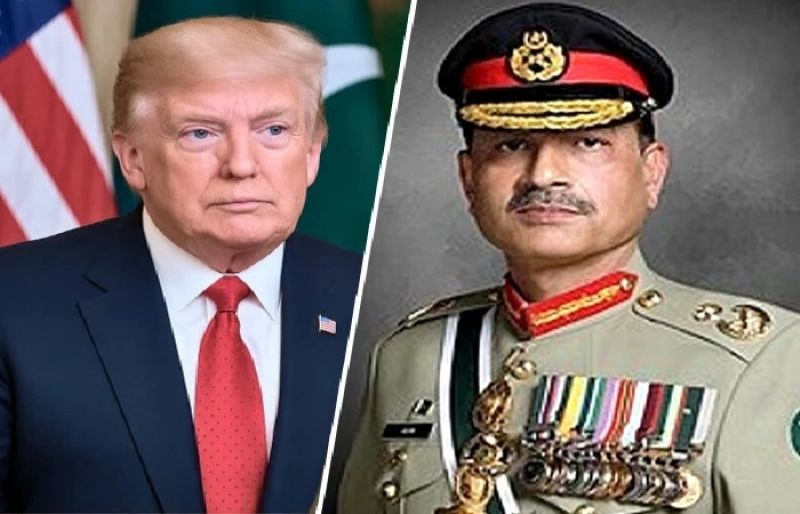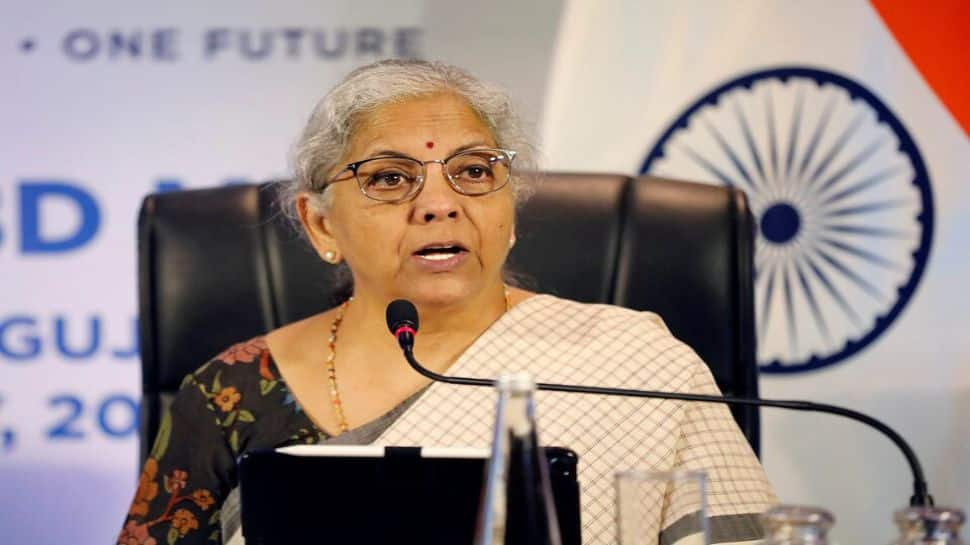Business
Pakistan’s Trump outreach sparks India ire as US ties take unexpected turn: Financial Times


Pakistan’s recent charm offensive towards United States President Donald Trump has unsettled New Delhi, the Financial Times (FT) reported, detailing how Islamabad’s army chief, Field Marshal Asim Munir’s warm reception in Washington contrasts sharply with India’s cooling ties with the White House.
According to the report, Munir travelled to Florida last weekend for the retirement ceremony of US Central Command chief General Michael Kurilla, marking his second cordial encounter with top American military officials this summer.
In June, Munir held a two-hour private lunch with Trump in Washington, just weeks after Pakistan and India engaged in their deadliest military confrontation in decades.
Such treatment is unusual for a foreign military leader, the newspaper noted, especially given Trump’s earlier criticism of Pakistan as offering “nothing but lies and deceit” to Washington. Yet the relationship appears to be enjoying what analysts described as an “unexpected resurgence” under the Republican president.
The FT said India was left “seething” by Munir’s White House welcome, as Trump’s administration offered Islamabad comparatively lighter trade tariffs — 19% compared to a punitive 50% on New Delhi — and promised a deal to develop Pakistan’s “massive oil reserves”.
The shift in tone is credited to a targeted Pakistani strategy involving counterterrorism cooperation, business outreach to Trump associates, and deals in energy, critical minerals and cryptocurrency.
Pakistani officials believe urgency was required to repair ties with the US president and his allies, some of whom had previously backed sanctions against Munir over the jailing of former prime minister Imran Khan.
An early breakthrough came in March when Pakistan’s intelligence services handed over an Islamic State Khorasan operative accused of orchestrating a 2021 Kabul bombing that killed 180 people, including 13 US soldiers.
Trump publicly praised the move in his State of the Union address, using the occasion to also criticise India over tariffs.
The report also highlighted Pakistan’s embrace of “crypto diplomacy”, including an agreement between a Trump-backed cryptocurrency venture and Pakistan’s crypto council in April. Since then, Minister for Crypto and Blockchain Bilal bin Saqib has engaged in trade talks with Washington while promoting Pakistan’s digital asset potential to figures close to the US president.
Munir’s conduct during the May conflict with India also bolstered Islamabad’s credibility with Trump, according to Pakistani officials. They said the army chief balanced “strength and restraint” by downing several Indian jets without escalating further, with the US and Gulf states mediating a ceasefire.
“Trump needs success stories to proclaim and Pakistan is happy to give them to him,” said Husain Haqqani, a former Pakistan ambassador to the US now at the Hudson Institute, a think-tank in Washington.
By contrast, Indian Prime Minister Narendra Modi publicly rejected any suggestion of US mediation, asserting that the agreement with Pakistan came through existing bilateral military channels.
The FT noted that Pakistan is presenting itself to Washington as a back channel to rivals Iran and China, reminiscent of its role in US diplomacy in the 1970s that facilitated Richard Nixon’s opening of US relations with China.
While Islamabad has criticised some American military actions, like strikes against Iran, it has also cast itself as a mediator between the US and its foes.
In late July, Munir flew to Beijing, where he toured the headquarters of the People’s Liberation Army and reassured China’s foreign minister Wang Yi over the safety of Chinese nationals in Pakistan.
“Pakistan is a rare country that is friends with China, Iran, the Gulf states, to a lesser extent, Russia, and now, again, the US,” said Marvin Weinbaum, a senior fellow at the Middle East Institute in Washington. “The US sees Munir as someone who can play a useful strategic role, and the Pakistanis keep their lines open to everyone but know to pull back when one relationship is clashing with another.”
For India, the burgeoning Trump–Pakistan relationship has proved an irritant, particularly given its failure to avert steep tariffs despite its larger economy. Indian officials expressed frustration at what they see as Washington rewarding a military-ruled neighbour for striking quick business deals.
Analysts cautioned, however, that Trump’s goodwill could prove volatile. According to the FT, Pakistan’s natural resource wealth remains largely unproven, its economy depends on a $7 billion IMF bailout, and recognition of Israel — a possible US expectation — would be politically difficult in Islamabad.
Haqqani told the newspaper that Trump is “playing the Pakistan card” to gain leverage over India. Former prime minister Shahid Khaqan Abbasi warned that while the outreach has yielded short-term gains, Islamabad must protect “both its interests and its dignity” in the unpredictable relationship.
Business
India’s $5 Trillion Economy Push Explained: Why Modi Govt Wants To Merge 12 Banks Into 4 Mega ‘World-Class’ Lending Giants

India’s Public Sector Banks Merger: The Centre is mulling over consolidating public-sector banks, and officials involved in the process say the long-term plan could eventually bring down the number of state-owned lenders from 12 to possibly just 4. The goal is to build a banking system that is large enough in scale, has deeper capital strength and is prepared to meet the credit needs of a fast-growing economy.
The minister explained that bigger banks are better equipped to support large-scale lending and long-term projects. “The country’s economy is moving rapidly toward the $5 trillion mark. The government is active in building bigger banks that can meet rising requirements,” she said.
Why India Wants Larger Banks
Sitharaman recently confirmed that the government and the Reserve Bank of India have already begun detailed conversations on another round of mergers. She said the focus is on creating “world-class” banks that can support India’s expanding industries, rising infrastructure investments and overall credit demand.
She clarified that this is not only about merging institutions. The government and RBI are working on strengthening the entire banking ecosystem so that banks grow naturally and operate in a stable environment.
According to her, the core aim is to build stronger, more efficient and globally competitive banks that can help sustain India’s growth momentum.
At present, the country has a total of 12 public sector banks: the State Bank of India (SBI), the Punjab National Bank (PNB), the Bank of Baroda, the Canara Bank, the Union Bank of India, the Bank of India, the Indian Bank, the Central Bank of India, the Indian Overseas Bank (IOB) and the UCO Bank.
What Happens To Employees After Merger?
Whenever bank mergers are discussed, employees become anxious. A merger does not only combine balance sheets; it also brings together different work cultures, internal systems and employee expectations.
In the 1990s and early 2000s, several mergers caused discomfort among staff, including dissatisfaction over new roles, delayed promotions and uncertainty about reporting structures. Some officers who were promoted before mergers found their seniority diluted afterward, which created further frustration.
The finance minister addressed the concerns, saying that the government and the RBI are working together on the merger plan. She stressed that earlier rounds of consolidation had been successful. She added that the country now needs large, global-quality banks “where every customer issue can be resolved”. The focus, she said, is firmly on building world-class institutions.
‘No Layoffs, No Branch Closures’
She made one point unambiguous: no employee will lose their job due to the upcoming merger phase. She said that mergers are part of a natural process of strengthening banks, and this will not affect job security.
She also assured that no branches will be closed and no bank will be shut down as part of the consolidation exercise.
India last carried out a major consolidation drive in 2019-20, reducing the number of public-sector banks from 21 to 12. That round improved the financial health of many lenders.
With the government preparing for the next phase, the goal is clear. India wants large and reliable banks that can support a rapidly growing economy and meet the needs of a country expanding faster than ever.
Business
Stock market holidays in December: When will NSE, BSE remain closed? Check details – The Times of India

Stock market holidays for December: As November comes to a close and the final month of the year begins, investors will want to know on which days trading sessions will be there and on which days stock markets are closed. are likely keeping a close eye on year-end portfolio adjustments, global cues, and corporate earnings.For this year, the only major, away from normal scheduled market holidays in December is Christmas, observed on Thursday, December 25. On this day, Indian stock markets, including the Bombay Stock Exchange (BSE) and National Stock Exchange (NSE), will remain closed across equity, derivatives, and securities lending and borrowing (SLB) segments. Trading in currency and interest rate derivatives segments will continue as usual.Markets are expected to reopen on Friday, December 26, as investors return to monitor global developments and finalize year-end positioning. Apart from weekends, Christmas is the only scheduled market holiday this month, making December relatively quiet compared with other festive months, with regards to stock markets.The last trading session in November, which was November 28 (next two days being the weekend) ended flat. BSE Sensex slipped 13.71 points, or 0.02 per cent, to settle at 85,706.67, after hitting an intra-day high of 85,969.89 and a low of 85,577.82, a swing of 392.07 points. Meanwhile, the NSE Nifty fell 12.60 points, or 0.05 per cent, to 26,202.95, halting its two-day rally.
Business
North Tyneside GP says debt stress causing mental health issues

A GP says patients are presenting with mental health problems because of stress they feel over their levels of personal debt.
According to Citizens Advice, north-east England has the second highest number of people who require professional assistance with debt problems – only London is higher.
Debt charity StepChange said in 2024 the highest concentration of their clients were in the North East, with 37 clients per 10,000 adults.
Dr Kamlesh Sreekissoon, who works as a GP in North Tyneside, said people were juggling “three or four jobs” in the build up to Christmas in order to manage and subsequently struggling with their mental health.
The most common reason for personal debt as reported by Stepchange’s North East clients is a rise in the cost of living (19.3%) and a lack of control over finances (19%).
Both these statistics outstrip the UK figures of 17.7% and 17.9% respectively.
Citizens Advice said thousands of people were falling deeper into debt to meet the cost of basic essentials such as food and fuel, rather than luxuries, but that people also felt under pressure to provide for Christmas.
Dr Sreekissoon said the stress caused by the debt people faced was compounded by issues relating to their family situations.
“At this time of year you will see people juggling three or four jobs, also after caring for elderly relatives, parents, [they’re] stressed out and unfortunately struggling with their mental health,” said Dr Sreekissoon.
He said the debt his patients described was not caused by buying unnecessary things, but by simply struggling to make ends meet.
“It’s more the basics,” he said. “I see people taking on working long hours, doing two or three jobs, and just being kind of stretched out, not being able to see their kids, and that just burns people out which is really sad to see”.
-

 Sports7 days ago
Sports7 days agoWATCH: Ronaldo scores spectacular bicycle kick
-

 Entertainment7 days ago
Entertainment7 days agoWelcome to Derry’ episode 5 delivers shocking twist
-

 Politics7 days ago
Politics7 days agoWashington and Kyiv Stress Any Peace Deal Must Fully Respect Ukraine’s Sovereignty
-

 Business7 days ago
Business7 days agoKey economic data and trends that will shape Rachel Reeves’ Budget
-

 Tech5 days ago
Tech5 days agoWake Up—the Best Black Friday Mattress Sales Are Here
-

 Fashion7 days ago
Fashion7 days agoCanada’s Lululemon unveils team Canada kit for Milano Cortina 2026
-

 Tech5 days ago
Tech5 days agoThe Alienware Aurora Gaming Desktop Punches Above Its Weight
-

 Politics7 days ago
Politics7 days ago53,000 Sikhs vote in Ottawa Khalistan Referendum amid Carney-Modi trade talks scrutiny






